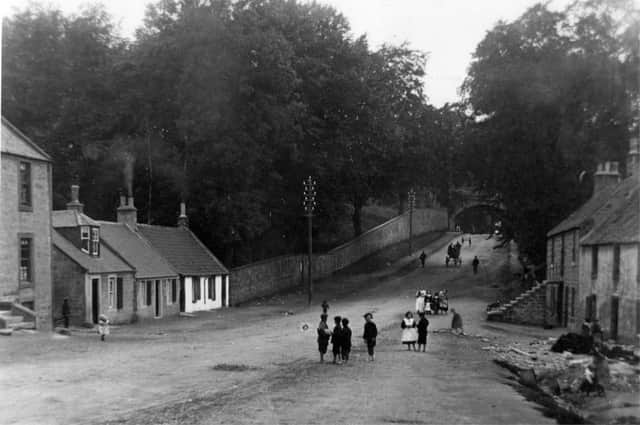What's in a name? Well local history for starters!


As usual it is an excellent mixture of stories and reminiscences and a must for all local history enthusiasts.
We were also treated to an entertaining talk by Duncan Ferguson whose family researches have unearthed some weird and wonderful characters linking the wild-west desperados in the aftermath of the Civil War to the myths and legends of witch-obsessed Argyll in the 17th century. Great stuff!
Advertisement
Hide AdAdvertisement
Hide AdIt was on my way home that the theme of today’s article came to mind.
I passed Singer Place and wondered how many people (especially young folk or new arrivals) had any idea why it had that name. A long forgotten Susan Boyle maybe?
The explanation is even simpler. From the 1860s for 30 years the famous shiny black bodies of Singer sewing machines were made not in Clydebank where the company had its factory but on the banks of the canal in Bonnybridge in Smith and Wellstood’s foundry.
Most homes had one of these machines in the days when mothers made clothes for their families – today they are antiques converted into occasional tables with the treadles still in place.
Advertisement
Hide AdAdvertisement
Hide AdThis hidden history is found all over the district in the names we have given to our streets over the centuries.
Some are easily explained: A multitude of former provosts and other dignitaries, old farms and foundries, long extinct trades and great families like the Heughs of Gartcows and the Meeks of Campfield.
Others have more unusual stories. Take Oxgangs Road in Grangemouth.
In medieval times, long before industrialisation, an ‘‘oxgang’’ was the amount of land that could be ploughed in a season using one ox drawing the old heavy wooden plough!
Advertisement
Hide AdAdvertisement
Hide AdIn the modern era we have Kemper Avenue which dates back to the post-war period when Falkirk was twinned with the French town of Quimper in Brittany.
In the Breton language, which is a bit like Welsh, the name is written as Kemper.
Up in Reddingmuirhead we now have Nobel View which reminds us of Alfred Nobel who invented dynamite then felt so guilty about his contribution to death and destruction that he created the famous annual prizes including the prize for peace.
Folk who live there look down over the land where his detonator factory flourished from 1876 until the 1980s.
Advertisement
Hide AdAdvertisement
Hide AdNobel himself lived for a time in Hawthorn Cottage in Laurieston and this leads on to other imported names.
Napier Place and nearby Merchiston Avenue recall the Napier family of Merchiston in Edinburgh who developed what is now Laurieston into a substantial village in the early 18th century and called it New Merchiston.
When they sold it to Sir Lawrence Dundas of West Kerse he changed its name to his own, ‘‘Laurie’s Town’’, and the Napiers acquired lands in Bainsford where St Mungo’s School stands today.
Sir Lawrence Dundas later bought the Shetland and Orkney islands and that explains why his descendants carry the titles of Marquess of Zetland and Lord Ronaldshay, and why we have streets with all these names.
Advertisement
Hide AdAdvertisement
Hide AdMy rough count tells me that there are well over 1500 streets in Falkirk district and many of them have interesting stories to tell.
Finding out just what they mean is a good way of learning about the history of where we live – but don’t expect to find all the answers
We have been agonising over Majors Loan for 50 years or more but seem to be no nearer an answer. Any ideas?